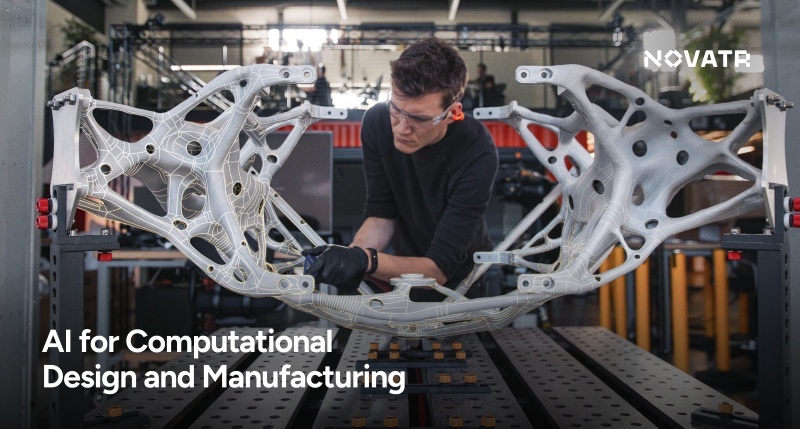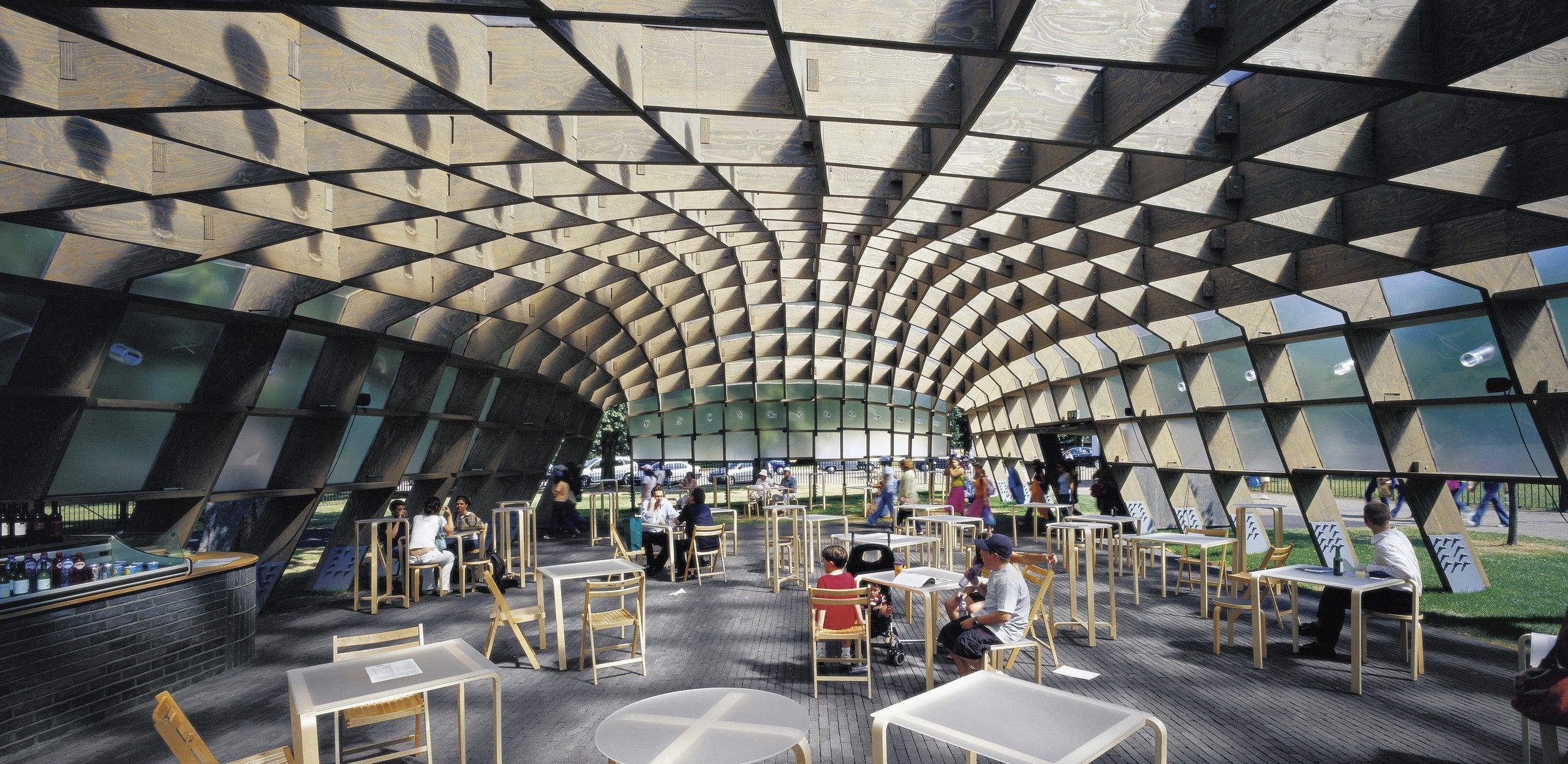
What began as Computer-Aided Design (CAD) has now evolved into a fully immersive and digital experience for conceptualisation. The process of computational and parametric design, which was once heavily influenced by programming, is undergoing a sharp turn with the integration of AI in both design and manufacturing. This shift allows creatives to focus more on ideation and innovation, rather than being burdened by the technicalities of the conceptualisation process.
Let’s dive deeper into the concept and its applications.
The Evolution of Computational Design
Computational design is not a new concept, but its application today is revolutionary. At its core, computational design leverages algorithms, data, and digital tools to extend human creativity. Unlike traditional design methods, where outcomes are defined by fixed rules, computational design enables the exploration of countless iterations, each generated by parameters and constraints set by the designer. This produces not just one solution, but a spectrum of possible outcomes.
The shift came with parametric and algorithmic design. By embedding rules into models, designers could adjust a single parameter and instantly see its impact across the design. This transformed design from a static process into a dynamic, responsive one. In many ways, this was the first step toward computational creativity.
Today, computational design stands at another inflexion point powered by Artificial Intelligence (AI). AI not only automates the generation of designs but also helps in analysing performance, optimising materials, and even predicting human interaction with spaces or products. The convergence of computation and intelligence is redefining how we design, manufacture, and innovate.
For students and professionals alike, this means the skill set required is evolving rapidly. Tools and workflows once sufficient a decade ago now feel outdated. This is where structured programs like Novatr’s Computational Design Course become essential, bridging traditional foundations with the emerging AI-driven computational design that is the future.
What are the Top Advancements in Algorithmic Design?
The leap from parametric design to algorithmic design marked a turning point in how architects, product designers, and engineers approached problem-solving. Where parametric design allowed designers to manipulate inputs and see outputs, algorithmic design took it further by enabling the creation of rules, scripts, and generative systems that could produce complex geometries and adaptive solutions.
However, algorithmic design also created new challenges. Not every professional came from a programming background, and many struggled to bridge the gap between creative vision and technical execution. Mastering scripting languages like Python, C#, or visual programming tools required time and a certain mindset. This was the stage where computational design felt both limitless and intimidating.
The good news? Today’s design ecosystem no longer isolates creativity from technology. With AI becoming a collaborator, designers are empowered to move past the steepest technical barriers. Still, to make the most of AI’s potential, one needs a strong foundation in algorithmic design thinking, the very mindset that helps you ask the right questions, frame problems computationally, and guide AI to generate meaningful outcomes.
Applications of AI in Computational Design and Manufacturing
Artificial Intelligence has moved beyond being a futuristic concept; it is now an everyday partner in the design and manufacturing industries. Here are a few applications and examples of AI in computational design, ranging from idea generation to construction.
1. Generative Design:
AI algorithms can autonomously generate countless design variations based on criteria such as material, cost, or spatial constraints. Designers can explore innovative, previously unimaginable solutions without starting from scratch.
2. Performance Optimisation:
Through simulation and analysis, AI optimises designs for energy efficiency, structural soundness, and cost-effectiveness. For instance, AI can predict building energy consumption and recommend changes that reduce waste and enhance sustainability.
3. Automation of Repetitive Tasks:
Tedious processes like data collection, documentation, or model checking can be automated, giving designers more time to focus on high-level creative and strategic work.
4. Enhanced Sustainability:
AI-powered tools can calculate carbon footprints, suggest low-impact materials, and propose design strategies that align with net-zero goals, pushing sustainability from a choice to a standard practice.
5. Renovation:
In existing structures, AI analyses data from sensors and building systems to propose efficient upgrades, such as improving HVAC systems, maximising both comfort and energy savings.
6. Improved Manufacturing:
Machine learning models are revolutionising manufacturing by optimising workflows, reducing defects, and enabling mass customisation of products and components.
7. Bridging Design and Construction:
AI helps convert complex digital forms into buildable components and provides real-time construction feedback, reducing errors and saving costs on-site.
8. Data-Driven Decision Making:
Large datasets, once overwhelming, can now be translated into actionable insights on costs, materials, and performance, empowering smarter design choices.
9. Democratising Access:
AI is breaking barriers by making advanced computational tools more affordable and user-friendly, allowing smaller firms and independent designers to participate in innovation.
Together, these applications are not just transforming workflows; they’re redefining the very role of designers in shaping the future.
Integration of Machine Learning in Computational Design
While AI provides the overarching framework, it is Machine Learning (ML) that gives computational design its intelligence. Machine learning algorithms excel at identifying patterns, learning from data, and making predictions, qualities that align perfectly with the iterative, data-driven nature of design.
In architecture and product development, ML can analyse vast datasets from material properties and climate conditions to user behaviour and translate them into actionable design insights. For example, ML models can learn from thousands of existing building designs to recommend layouts that maximise natural lighting, or predict how different structural systems might perform under stress. This shifts design from intuition to evidence-based decision-making.

One of the most powerful applications of ML is in predictive modeling. Designers no longer need to simulate every possible variation manually. Instead, ML models can forecast outcomes based on previous runs, saving both time and computational resources. This is especially useful in performance-driven design, such as predicting energy use or material efficiency in large-scale projects.
In manufacturing, ML-driven predictive maintenance ensures machines run efficiently by flagging issues before they become critical, while optimisation algorithms fine-tune production workflows for speed and cost-effectiveness.
However, the true value of ML lies in its ability to amplify human creativity. It doesn’t replace the designer; it provides a smarter canvas where imagination is enhanced by intelligent data-driven suggestions.
This is why Novatr’s Computational Design Course includes exposure to machine learning frameworks, ensuring learners not only understand design algorithms but can also harness ML to innovate responsibly and effectively.
Role of Artificial Intelligence in Design

Artificial Intelligence is reshaping the very definition of what it means to design. Traditionally, design was a process of human ideation followed by translation into drawings or models. With AI in the picture, the process becomes far more collaborative. Designers set the intent, and AI becomes a co-creator that suggests, tests, and refines possibilities at a scale no human could achieve alone.
One of the most visible impacts of AI in design is speed and scale. What once took weeks of modeling and simulation can now be compressed into hours. AI doesn’t just speed up iterations; it expands the range of exploration, uncovering solutions that may not have crossed a designer’s mind. The result: more innovative, more resilient, and more human-centric designs.
AI is also enabling personalisation at unprecedented levels. Whether it’s tailoring a product to an individual’s ergonomic needs or creating buildings that adapt to local climate and cultural contexts, AI ensures that no two outputs need to be the same. This kind of mass customisation would have been unthinkable a decade ago.
At Novatr, this philosophy underpins the Computational Design Course. Learners aren’t just taught to use AI as a tool; they’re trained to collaborate with AI as a creative partner, preparing them for the new frontier of design practice.
How Novatr’s Computational Design Course Prepares You for AI and Computational Design
The rapid evolution of computational design and AI has created an urgent demand for professionals who can navigate both creativity and technology. Yet, many designers find themselves at a crossroads: traditional education often emphasises theory, while industry demands practical, tech-driven skills. This is the gap Novatr’s Master in Computational Design course bridges.
Novatr emphasises hands-on, project-based learning. By the end of the program, learners can confidently demonstrate how computational design and AI can be harnessed to optimise performance, enhance sustainability, and unlock new forms of creativity.
In short, NNovatr doesn’t just teach tools; it prepares designers to lead the future of computational design in the age of AI.
Conclusion
The journey of design has always been about evolution, moving from pen-and-paper sketches to CAD, from parametric rules to algorithmic systems, and now from computation to intelligence. With the arrival of AI, the boundaries of what designers can achieve have expanded beyond imagination. It’s no longer about simply creating; it’s about collaborating with machines that can analyse, optimise, and co-create alongside us.
This is where Novatr’s Computational Design Course makes all the difference. By blending hands-on training in parametric and algorithmic design with exposure to AI and machine learning workflows, Novatr equips learners with the skills and confidence to lead in an AI-powered industry. More than a course, it’s a launchpad into the future of design where sustainability, performance, and creativity converge.
Checkout our resources page for insights on computational design.
Was this content helpful to you







